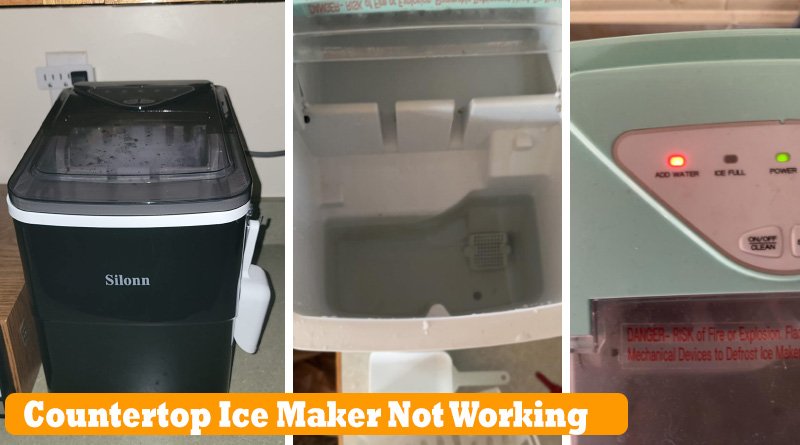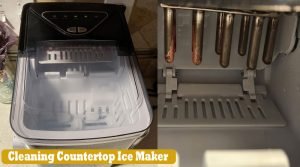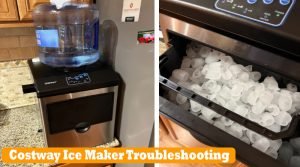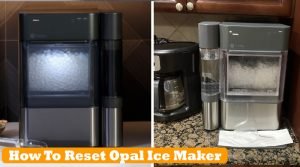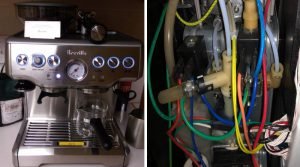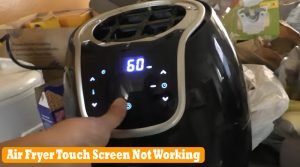Countertop Ice Maker Not Working: Expert Tips
Encountering issues with a countertop ice maker not working can be frustrating and inconvenient, especially when you rely on it for a steady supply of ice. Whether hosting a gathering, enjoying a refreshing drink at home, or running a small business, a non-functional ice maker can disrupt your plans and leave you without the essential cooling element. Identifying and addressing why a countertop ice maker is not working is crucial to restoring its functionality and ensuring a seamless experience in producing ice for various needs.
The following introduction discusses common problems that can cause a countertop ice maker to malfunction, offering troubleshooting and solutions.
Common Reasons: Countertop Ice Maker Not Working
Countertop ice makers have become a staple in many households, offering the luxury of having fresh ice at your convenience. Occasionally, they may encounter problems like any other appliance. When countertop ice maker isn’t working, it can be a frustrating experience. But before you call in a professional, it’s worth exploring some simple steps to troubleshoot the issue.
Here are some common reasons why ice maker may be malfunctioning and what you can do to fix it.
1. Power Supply: Start with the Basics
The power supply is the first thing to check if ice maker isn’t producing ice. It may seem obvious, but a loose plug or a tripped circuit can sometimes be the issue’s root.
Troubleshooting steps:
- Ensure ice maker is plugged in correctly.
- Test the outlet with another device to ensure it’s in working order.
Try a reset if the outlet works fine and the ice maker is plugged in. Unplugging the unit and waiting a few minutes before plugging it back in can sometimes reset any internal switches that may have been triggered.
2. Water Supply: No Water, No Ice
Another common problem is the water supply. If ice maker isn’t getting water, it won’t be able to make ice, no matter how much power it has.
Troubleshooting steps:
- Check the water line to ensure it’s connected to the unit and turned on.
- Inspect the line for any kinks or blockages preventing water from flowing properly.
If a model requires a container to be filled manually, ensure the container is sealed and properly placed. For those with a direct water line, inspect the valve for any issues that could restrict or cut off the water supply.
3. Ice Bin Full: A Common Overlooked Issue
Sometimes, the simplest explanation is the correct one. If your ice bin is full, the ice maker will stop producing ice until it’s emptied. Additionally, if the ice melts and refreezes in a large clump, the mechanism can jam.
Troubleshooting steps:
- Empty ice bin and check for any large clumps of ice that could be causing a jam.
- Allow the unit to defrost if you notice signs of frost or ice build-up.
Once the ice bin is cleared, you should be able to start the ice maker back up and see if it resumes normal operation.
4. Clogged Water Filter: Clean for Optimization
An often neglected component of a countertop ice maker is the water filter. If the filter is clogged, it can reduce or cut off the water supply to the ice maker, resulting in no ice production.
Troubleshooting steps:
- Consult ice maker’s manual to locate and remove the water filter for inspection.
- Clean it with the manufacturer’s instructions if it’s dirty or clogged. If it’s beyond cleaning, replace it with a new filter.
Regular maintenance, such as changing the water filter every six months, can prevent this from becoming a frequent problem.
5. Malfunctioning Parts: Beyond Home Repair
If you’ve checked the power and water supply and taken care of any basic issues and ice maker still isn’t working, it may be due to a malfunctioning part. Commonly failed parts include the water inlet valve, the ice maker assembly, the control module, and the compressor.
Troubleshooting steps:
- Inspect the visible parts of the ice maker for signs of wear or mechanical issues.
- If you cannot identify a visual issue, it might be time to call a professional or the manufacturer for assistance.
Attempting to repair a major part without experience could lead to further damage. It’s always best to leave more complex issues to those with training and expertise.
6. Ice Not Forming: A Chilling Mystery
When everything appears in working order, but ice doesn’t form, the temperature setting could be too high. Check the user manual to adjust the temperature to the recommended setting, typically around 0°F. Next, the machine itself may need a good clean. Lime scale and mineral deposits can disrupt the freezing process, and a quick descaling can often fix the issue.
Lastly, ensure the water level in the reservoir is adequate; machines usually shut down if water is too low or too high.
7. Ice Maker Leaking: A Slippery Situation
Finding pools of water around your ice maker is not just an inconvenience; it can also lead to various problems, including damage to surrounding surfaces. To address leaks, candidates for inspection include the water supply line, which may need tightening, or the ice maker’s assembly, which could be damaged. Regularly checking for and removing ice blockages can prevent leaks from disrupting day.
8. Ice Tastes or Smells Bad: A Palatable Problem
The enjoyment of ice-cold beverage can be quickly dashed by off-tasting or malodorous ice. The issue may be as simple as a dirty ice maker. A thorough cleaning can solve the problem. If the issue persists after cleaning, consider the quality of water source.
Replacing the water filter can also be a savvy move to enhance the taste and odour of your ice. This information is intended for general guidance and reference purposes only. Always consult a professional technician or manufacturer for any personal appliance issues.
Check out how to clean Braun coffee maker Start by unplugging the machine from the power source for safety reasons.
Preventive Maintenance Tips for Countertop Ice Maker
Resetting the Ice Maker: Ice maker function can often be reset by unplugging the machine for a few hours, allowing any ice build-up to thaw. Once it’s been cleaned and dried, plugging it back in can reset the internal systems. If a more complex reset is required, refer to the unit’s specific manual for step-by-step instructions.
Inspecting and Replacing Faulty Components: For those comfortable with more in-depth appliance maintenance, inspecting and replacing internal components such as the water inlet valve, condenser fan, or compressor can sometimes be necessary. Before tackling these tasks, having the appropriate tools and unplugging the unit is crucial.
Seeking Professional Appliance Repair Assistance: For persistent or complex issues and those who prefer to avoid taking the DIY route, contacting a professional appliance repair technician is wise. They have the experience and tools to diagnose and fix the issue, potentially saving you from the frustration and risk of further damage.
Regular Cleaning and Maintenance: An often-overlooked part of countertop ice maker ownership is routine cleaning. This includes descaling the machine as needed, wiping down the exterior and interior, and ensuring the environment around the appliance is clear. Regular maintenance like this keeps your ice maker in working condition and contributes to better-tasting ice and a longer product life.
Proper Storage and Usage Guidelines: Stowing an ice maker when not in use or moving is important to prevent damage. Also, be mindful of overworking your machine; while it’s designed to make ice as needed, it’s meant to be something other than constantly churning out cubes. This can overtax the motor and lead to a shorter lifespan for the appliance.
Final Verdict
Countertop ice maker not working can be a kitchen-sized headache, but more often than not, the solution is simple. By working through these common problems, you will save time and money and broaden understanding of how ice maker functions. Proper care and maintenance, like regular cleaning and filter changing, can go a long way in keeping ice maker running smoothly. So, the next time ice maker acts more lukewarm than ice-cold, take a deep breath, refer to this list, and get ready to chill beverages again.
FAQs of Countertop Ice Maker Not Working
Q: Why is my countertop ice maker not making ice?
A: The issue could be due to several reasons, such as a frozen water line, a faulty water inlet valve, or a malfunctioning thermostat. Checking these components might help you identify the problem.
Q: What do I do if my ice maker is not getting water?
A: First, check if the water supply line is connected and the valve is open. The water inlet valve might be faulty or clogged if that’s not the issue. If necessary, consider seeking professional help for repair or replacement.
Q: Why is my ice maker making a loud noise?
A: A loud noise could indicate a problem with ice maker’s fan or motor. It could also be because of ice cubes jamming the machine. Try unplugging the machine, clearing any ice, and plugging it back in.
Q: Why does my countertop ice maker keep freezing up?
A: This could be due to a defective water inlet valve allowing water to drip into the ice mould, causing it to freeze. Another reason could be that the room temperature is too low. Try to keep the ice maker in an environment with room temperature around 70°F.
Q: How often should I clean my countertop ice maker?
A: It’s recommended to clean countertop ice maker every 3-6 months, depending on usage. Regular cleaning helps ensure optimal performance and longevity of the machine.
Q: Why is my ice maker producing small or thin ice cubes?
A: This could be due to low water flow or a faulty water inlet valve. Check the water supply and pressure, and consider replacing the valve if needed.
Q: What should I do if my ice tastes bad?
A: Bad-tasting ice could be due to dirty water filters, stale water, or a need to clean the machine. Try replacing the water filter, using fresh water, and cleaning the ice maker.

